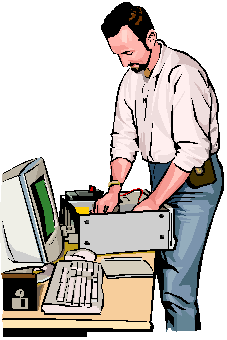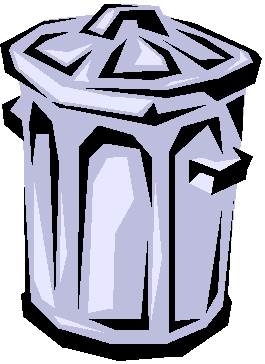
Disposition of Weeded Materials
Once materials have been weeded, there are a number of ways in which they can be handled. In some cases, materials are repaired and returned to the collection. In others they are sent to other libraries or made available for purchase to members of their communities through book sales. And lastly some materials are removed permanently from the collection, and are discarded.

Repaired Materials
Materials to be repaired. Some materials are weeded simply because they are in poor condition. In some cases such materials are no longer available for sale. If such materials do not have to be rebound, they may be removed temporarily from the collection to be repaired. They then will be returned to the shelves. Repaired books will never look as good as new, so you need to be careful not to allow too many damaged books to be repaired and returned to the shelves. Often it is better to find a suitable replacement for a book that would otherwise be repaired.
Materials to be rebound. In other cases, materials which still have value to the community are taken from the shelf because of damage to their covers or binding. In these cases, if the material is no longer available for sale, the materials may be sent to a commercial bindery for repair. Upon their return from the bindery, they are returned to the shelves.

New Ownership for Materials
Sending materials to other libraries. Some materials that are weeded are no longer appropriate for smaller libraries, but they may be very useful in larger collections. For example, materials on a "hot topic" of several years ago may still be useful to a library serving a larger population, but may no longer be appropriate for a small collection. The advantage of this option for disposing of materials is that the materials remain available to the community through interlibrary loan, but valuable shelf space is not taken up by materials that are not likely to be used often.
Book sales. Many libraries dispose of materials through book sales. Book sales may be occasional events--such as annual book sales--or they may be on-going. Many libraries have a policy that any material that has been weeded (except for materials in unusable condition) will be offered for sale to the public before it is discarded. When materials are placed in the book sale, it is important that they be thoroughly marked as discarded by the library. If possible remove the call numbers, book pockets, slips and cross out any property stamps, as well as stamping the materials as discarded. If you do not do this, many of these materials may return to you at a later date.

Options for Discarding Materials.
There are a number of ways in which books may be finally discarded.
Dumpster. One method is simply to throw discarded books in the dumpster. If you are going to use this method, it is best to put the materials in plastic bags or boxes. If the materials are left out in plain sight, people assume that the books were thrown out by a thief or by mistake and will bring them back to the library. Even if the materials are boxed, there is always a chance that a "dumpster diver" will find them and bring them back to you. So it is important to mark the books as discarded. You may even wish to go further and cut the covers off the books and otherwise destroy them as books before sending them to the dump.
Recycling. Another method that is available in some communities is recycling. Check with your local recycling plant to see if they will take your old books for their paper. The advantage of this method is that the materials are delivered to an agency that can be informed that the materials are no longer needed, and so the chance of the materials being returned is reduced. This method may also be somewhat more acceptable in a political sense, since the books will be used again and you might even make a little money this way.
Click the arrow below to continue to the next page